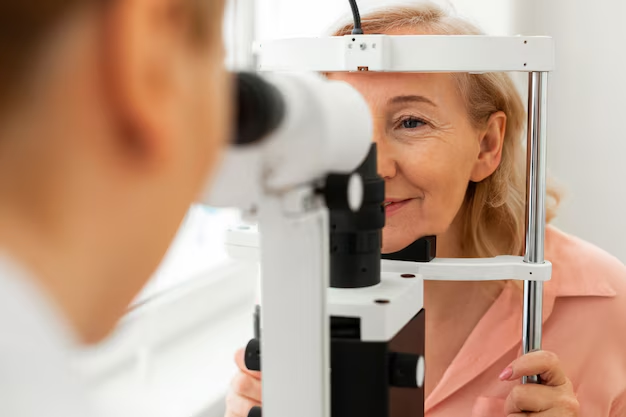When Is Cataract Surgery Necessary? Understanding the Visual Thresholds
Cataracts, a common vision impairment condition, affects countless individuals as they age, causing blurriness, dimness, and a host of other vision problems. But at what point does a cataract become severe enough to warrant surgical intervention? This question is at the forefront of many patients' minds when considering the options for preserving their quality of life through clear vision. In this guide, we will explore the indicators that may suggest the need for cataract surgery and discuss the factors involved in the decision-making process.
Understanding Cataracts and Their Impact on Vision
What Are Cataracts?
Cataracts are characterized by the clouding of the lens in the eye, which can lead to diminished vision. They typically develop slowly and can affect one or both eyes. Although cataracts most commonly appear in older adults, they can occur at any age due to various risk factors, including diabetes, long-term steroid use, or previous eye surgery.
Symptoms of Cataracts
The symptoms associated with cataracts can vary but often include:
- Blurry vision: An increasing haze that makes everyday activities challenging.
- Faded colors: Perception of colors becomes less bright and vibrant.
- Glares and halos: Light sources, such as headlights or lamps, may produce annoying glares.
- Double vision: Seeing multiple images in one eye.
- Frequent prescription changes: A frequent need to update glasses or contact lens prescriptions.
The severity of these symptoms plays a significant role in the decision to pursue cataract surgery.
The Visual "Threshold" for Cataract Surgery
Determining how "bad" eyesight needs to be for cataract surgery is not straightforward. It involves a careful evaluation by an eye care professional, considering several criteria.
Visual Acuity
A common measure for assessing vision impairment is the Snellen chart, which tests how well you can see at a distance. Generally, an individual might be considered for cataract surgery if their visual acuity falls below a certain threshold, often around 20/40 or worse, in conjunction with disruptive symptoms affecting daily life activities.
Quality of Life Considerations
The decision for surgery transcends simple metrics and considers how cataracts affect your day-to-day functioning. If cataracts hinder activities such as reading, driving, cooking, or performing professional tasks, this practical impact may justify surgical intervention, even if visual acuity measures differently.
Functional Vision Assessment
Beyond visual acuity, functional vision tests may be conducted. They provide insight into issues like contrast sensitivity and glare susceptibility, which can significantly impact life quality yet are not fully captured by standard vision tests.
Personal and Professional Concerns
Personal preferences and professional requirements play a significant role. Individuals whose careers depend heavily on acute vision (e.g., pilots, photographers) might seek surgery sooner than others to maintain employment standards and ensure safety.
Timing Cataract Surgery: Key Considerations
Pros and Cons of Early Surgery
- Pros: Early cataract surgery can enhance vision before it has severely declined, possibly preventing secondary complications and enhancing life quality from the onset.
- Cons: As with all surgeries, risks, albeit minimal, exist, and undergoing surgery too early might mean foregoing other less-invasive vision correction options.
Risks of Delayed Surgery
While some might opt to wait until vision deteriorates further, delaying surgery can cause considerable discomfort and risk the development of secondary conditions such as glaucoma or irreversible optic nerve damage over time.
Preparing for Cataract Surgery: Steps and Expectations
Consultation and Evaluation
Before surgery, a comprehensive eye examination gauges the extent of the cataract and your overall eye health. This evaluation typically includes:
- Visual function testing: Beyond visual acuity, tests might assess glare and overall vision quality.
- Eye health check: Ensuring no underlying conditions will complicate surgery.
- Lens selection advice: Guidance on intraocular lens (IOL) options to address specific vision needs post-surgery.
Choosing the Right Lens
Several IOL options exist for those undergoing cataract surgery:
- Monofocal IOLs: Typically cover distance vision; reading glasses may still be needed.
- Multifocal IOLs: Designed to reduce reliance on glasses by offering multiple vision correction points.
- Toric IOLs: Address astigmatism alongside cataract removal.
Deciding on the right lens involves thorough discussions between you and your ophthalmologist, considering lifestyle needs and preferences.
Life After Cataract Surgery: Adjustments and Outcomes
Post-Surgery Recovery
Recovery from cataract surgery is typically quick and straightforward:
- Immediate post-op care: Sunglasses are recommended to reduce light sensitivity. Avoid heavy lifting and keep water out of the eyes to prevent infection.
- Follow-up visits: Essential to ensure the healing process is on track and vision is improving as expected.
Long-term Vision Improvements
Many patients experience improved vision almost immediately, with full benefits apparent as the eye heals over the weeks following surgery. Colors appear more vivid, glare dissipates, and daily tasks from reading to driving become easier.
Maintaining Healthy Eyes
Ensuring continued eye health post-surgery involves regular check-ups and protective measures like wearing sunglasses with UV protection and using prescribed eye drops. Simple lifestyle changes such as a balanced diet rich in antioxidants and regular eye exercises also support eye health.
📝 Key Summary: What Should You Know?
Here's a quick overview with practical tips and takeaways:
- 👀 Visual Acuity: Cataract surgery is typically recommended when vision is 20/40 or worse, especially if it affects daily activities.
- 💼 Quality of Life: Surgery is often considered when cataracts hinder essential tasks or critical professional functions.
- 🏃♂️ Speed of Progression: Fast-progressing cataracts might necessitate earlier surgery consideration.
- 🤔 Personal Preferences: Each patient’s work and lifestyle needs are crucial in the decision process.
- 🔍 Lens Options: Multiple intraocular lens choices can tailor vision correction to individual needs post-surgery.
- 🕶 Post-Op Care: Follow recovery protocols, attend follow-up appointments, and protect your eyes for optimal recovery.
By understanding these factors, you’ll be empowered to make more informed decisions about cataract surgery, focusing on what best supports your vision needs and lifestyle.
